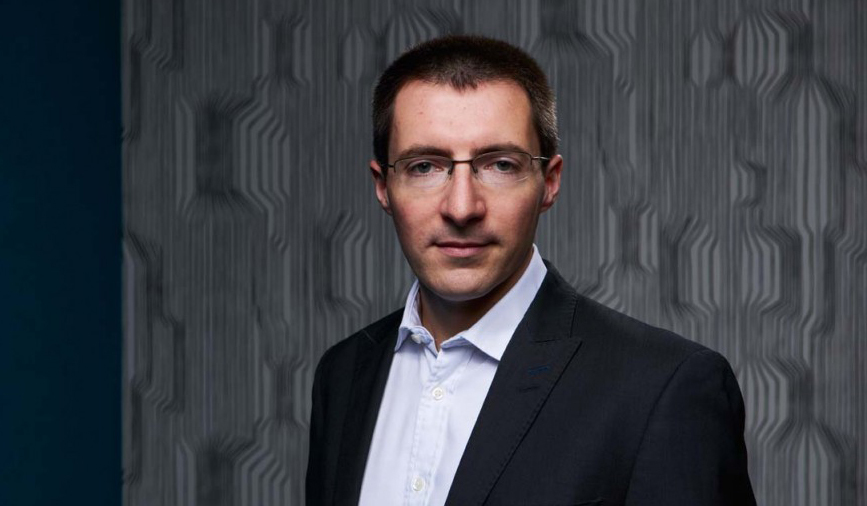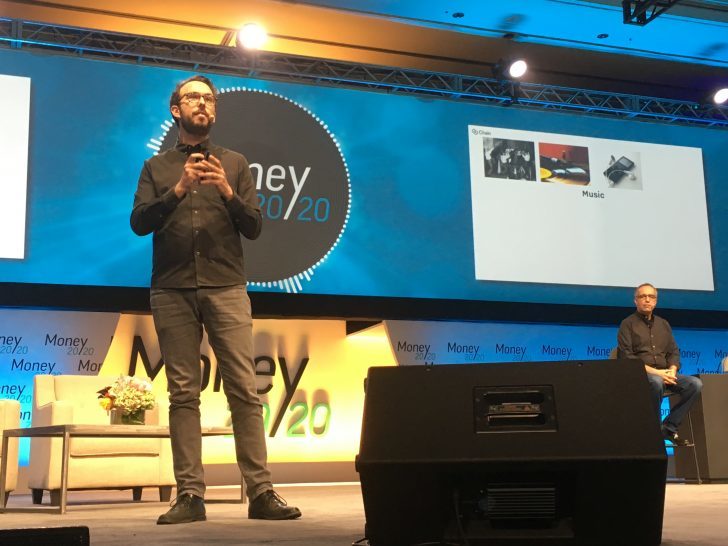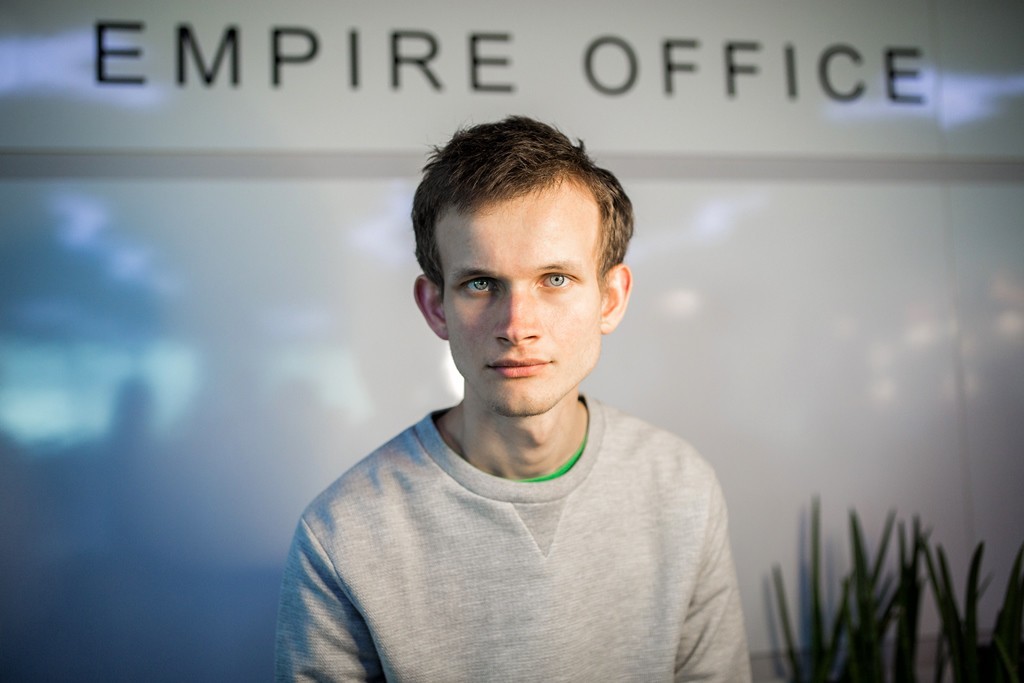The most influential figures of the Blockchain community in 2016
If you want to evaluate how 2016 went for the Bitcoin and Blockchain community, then trying to identify the most active and influential representatives of these areas will be a very good starting point.
The survey results were somewhat surprising, and partly quite natural. Be that as it may, there are quite a few newbies on the list, and this is another evidence of the continuous development of this ever-changing industry.
So, let's see who was in the ranking of this year.
')
10. Perienn Boring

Any changes in the US Congress are almost by definition slow and tedious. Nevertheless, being the head of the Chamber of Digital Commerce, Boring played a key role in many processes, having managed to achieve results where they could easily not have been.
Behind Boring is a job as an assistant congressman and journalist for RT and Forbes. Now she is the initiator of many conversations held on Capitol Hill, making Blockchain more accessible to all interested US citizens and constantly paying attention to the need to change and improve legislation regulating the industry.
Under the leadership of Boring, the Chamber drew general attention to the topic of smart contracts, holding a symposium in early December, which was attended by representatives of the Commodity Futures Trading Commission (CFTC) and the Financial Services Regulatory Services (FINRA).
If we consider 2016 as the year of attention to digital currencies and Blockchain from Washington, then Boring is definitely one of the key figures who managed to contribute to the growth of this attention.
9. Chris DeRose and Junseth

Bitcoin Uncensored podcast experts, Chris DeRose and Josh Anset (preferring to perform under the pseudonym Junseth) have been able to shock the public more than once this year thanks to their podcasts' aggressive, aggressive, caustic and witty style of commenting.
One such approach came to taste, others caused condemnation. It is quite possible, however, that it was precisely such a reaction that the presenters were seeking from the very beginning. At the same time, their style became the subject of serious controversy. It came to charges of sexism, especially with their interview with the head of the Chamber of Digital Commerce, Perienn Boring. The scandal had a lot of influence on how the semantic content of the issues was perceived.
Among the most interesting interviews of Bitcoin Uncensored, we should note a conversation with convicted Bitcoin Savings and Trust financial pyramid operator Trendon Shapers and Neo and Bee CEO Danny Brewster. However, even when the energetic attacks on the guests subsided, the show did not lose its value, showing considerable depth of expertise.
For example, in one of the recent episodes, the presenters tried to uncover something that they took to be a fraudulent scheme that operated on the open spaces of Craigslist . In the end, it turned out that we are talking only about a harmless and well-intentioned seller of boats, using Bitcoin to receive payments. During the podcast, considerable work was done, well demonstrating to the listeners the uniqueness of Bitcoin as a distinctive functional economy based on Blockchain.
Regardless of whether or not you agree with them, DeRouse and Junsth's unique approach to managing bitcoin podcasts — not to mention the considerable timekeeping of their episodes lasting several hours each — allowed them to show themselves as noticeable this year. strength in the industry.
8. Richard Gendel Brown

R3CEV technical director Richard Gendal Brown in 2016 had a significant impact on the blockchain scene.
The company that Brown represents, that is, a technology startup that received support and was founded by a consortium of more than 40 banks, has spent the last year and a half studying and experimenting with distributed registries. In addition to performing the functions of a technology leader, Brown was also one of the main initiators and organizers of the discovery of the project's source code, fully encouraging criticism and input from members of the community.
And although Brown openly admits that the work is far from complete, this debut was a very important moment for all the coders of the New York company.
However, it’s not just the lines of the Corda code and the benefits they brought in the outgoing year. In April, Brown advanced his thesis on distributed technologies, proposing the idea that Blokchain alone would not be enough to solve some of the pressing problems of the banking sector.
In particular, Brown showed that the state of facts that institutions exchange among themselves in the course of joint activities is a field of business activity that is much more mature for innovation than, for example, payments.
Corda, as a platform ahead, has a long way to go, but its conceptual foundations may have had an impact on the industry, including possibly changing the general course of its development.
7. Don and Alex Tapscotta

Don Tapscott and his son Alex, the authors of Blockchain Revolution , which characterizes the year 2016, became the two most prominent voices promoting the latest blockchain development in mainstream finance.
You will hardly be able to attend any industry event and not meet there one of Tepscotta, deeply and thoroughly highlighting the current state of technology. To get a general idea of how this looks, it is enough, for example, to watch Don's lecture for TED .
Nonetheless, for Tapscott themselves, working with Blockchain goes beyond writing books and holding lectures.
Earlier this year, Don was one of the initiators of the creation of the Muskoka Group - a project aimed at exploring Blockchain’s management opportunities. The project is being developed in collaboration with real representatives of the municipal authorities, in whose assistance, according to the authors, the initiative was sent.
6. Peter View

The co-founder of Blockstream, a Bitcoin startup and one of the most prominent developers of the Bitcoin open-source core team, Peter Vyuil played a very important role in all Bitcoin-related developments this year.
One quick glance at a ViewHit GitHub account is enough to estimate its contribution. In total, he published hundreds of commits of code. According to Bitcoin.org , View at the moment is the second most productive contributor, second only to core maintainer core developer Vladimir van der Laan.
However, it was Vilyuil who proposed Segregated Witness, an ambitious plan to change the mechanism of using available space in the transaction block, designed to improve the speed of the network and caused a lot of fierce and extremely unpleasant disputes in the Bitcoin community.
His presentation, which took place during the Hong Kong conference Scaling Bitcoin last year, laid the foundations for the constant skirmishes between SegWit supporters and members of the community, calling for an increase in the maximum allowable amount of data in the block.
The work done by Vuil and other initiators of the SegWit proposal this year has moved from testing to practical implementation, preparing, in turn, the ground for a serious change in the direction of development of Bitcoin in 2017. For View and other Bitcoin developers, 2017 is likely to be key and decisive.
5. Adam Ludwin

Last September, major financial service providers Visa and Capital One participated in financing startup Chain, in which the company raised $ 30 million. By the end of 2015, the startup completely changed its line of business from developing Bitcoin-API to providing blockchain services to corporate clients.
Almost a year later, a partnership with Visa led to probably the industry’s largest result: the card giant announced its intention to launch a blockchain service in 2017.
As CEO of Chain, Ludwin played a key role in the process, facilitating Visa in its first step into the blockchain market. In addition, in partnership with Visa, Capital One and other financial institutions such as Citi, Fidelity and State Street, his company announced the launch of an open-source blockchain protocol for deploying private blockchains called Chain OS 1 (now Chain Protocol) - perhaps , the most ambitious release on the market today.
And this is not to mention his opening speech on Blockchain, which he gave to representatives of central banks from different countries of the world. It came at an opportune time given the fact that such institutions around the world are now showing considerable interest in researching technology and developing their own digital currencies based on it.
4. Satoshi Nakamoto

It was the creator (or group of creators) Bitcoin hiding under this pseudonym who directed the development of digital currency in the early stages of development up to his disappearance from the scene several years ago.
Last year, however, the industry watched a drama around Australian entrepreneur Craig Wright, who, according to some sources, could have been behind the creation of Bitcoin. This news made a lot of noise in the information space last year.
And in May of this year, Wright again added fuel to the fire, re-chained everyone’s attention to history. He announced his intention to prove that Nakamoto actually was, but at the last moment took his words back, saying that he did not intend to provide final evidence against the background of accusations of fraud.
A few months later, this story was almost forgotten. But even though the majority of the financial world representatives are not in a hurry to take Bitcoin with open arms, the role that Nachamoto played in the mainstream distribution of the blockchain still makes itself felt, even 8 years after the first description of the technology appeared.
3. Andreas Antonopoulos

Ask the average community member about who, in their opinion, can be called the leading thinker and permanent representative of Bitcoin and you will almost certainly not hear the name of Andreas Antonopoulos in response.
Antonopoulos is the author of Mastering Bitcoin and a frequent speaker who lectures on this topic. The results of his work, perhaps, are best traced by the example of his flight schedules and trips. This person moves around the globe, giving lectures both in front of ardent bitcoiners and skeptical bankers (depending on the event).
In 2016, Antonopoulos began to cover other blockchain projects, such as Ethereum, giving his comments on the most resonant events, such as the hacking and disintegration of the DAO. In addition, he put forward a proposal to create an international decentralized network of arbitration and mediation, which draws its inspiration from the idea of the 1958 UN Convention in New York . Next in line is the author’s next book, Mastering Ethereum , which is scheduled for October.
This is not the first time Antonopoulos is on the CoinDesk lists. Previously, he was already noted as the most influential representative of the bitcoin community in the corresponding portal rating for 2014.
2. Acne Buterin

A year ago, Ethereum, led by its founder Vitalik Buterin, completed a crowdfunding campaign just a few months ago. It was a time when the project was surrounded by rumors of constant delays, but at the same time, Ethereum supporters made positive predictions about its future.
Looking back over the past year, we can safely say that the last 12 months have been an adventure for Ethereum.
Buterin, who led the work on Homestead , the ambitious second major release of the project, and helped the community, albeit generally chaotic, but still respond to the collapse of the DAO, remains the only one of its kind most prominent figure of the project.
Looking at both hardships and hardships and Ethereum's victories, we can say that 2016 turned out to be decisive for him in the sense that the events that took place helped the platform to emerge, finally, in the form in which it probably will last several years old.
As one of the attendees of the September conference DevCon2, 2016 would say, was the year of a direct, “interactive” approach to development, within which such systems could easily undergo major changes after the launch. And this state of affairs would hardly have become fashionable if not for the support and initiative of Buterin.
“In the first year, it was more like smoke,” said technology consultant Carlos Buendía Gallego about this. “And now we are creating real things.”
If the outgoing year still testifies to something, it is that 2017, whether it is good or bad, will be a period of even greater creation for Buterin and the company.
1. The DAO cracker (s)

As in the past year, the identity of the winner of this year’s rating remains undisclosed.
The man behind (or group of people) behind the attack on The DAO shook the entire blockchain-world this summer, using the phenomenon that observers had previously called a sign with the words “come in and take free money” embedded in the code.
As a result, Ethereum developers performed a series of operations to return the blockchain to the state preceding the attack, that is, they actually overwritten its history. This allowed investors to exchange part of their DAO tokens back to ethers and thereby return control over the invested funds. However, this attempt caused an unpleasant aftertaste among some interested community members and discontent resulted in the emergence of a separate competing project Ethereum classic.
Due to the peculiarity of ethereum-classic blockchain, which does not allow any rollback, at least some of the stolen funds will get to the exchanges and eventually settle in the pockets of hackers.
The individuals who organized this attack received the most votes in the poll. This probably reflects the importance of the role they played in exposing the critical bug of the smart contract mechanism underlying the ethereum project.
The event also drew general attention to the inherent danger of all such applications, serving as a notorious reminder that in the case of smart contracts, a single error in the code can be a cause of devastating consequences.
Perhaps you have your own opinion regarding the participants in the above list?
Other participants worth mentioning are: Chris Larsen , Den Larimer , Roger Ver , Emin Gün Sirer , Zuko Wilcox , Adam Baek , Barry Silbert .
Continue to follow the updates of the blog of the Wirex blockchain service in the new year and keep up to date with the most important events of the world blockchain industry.
Source: https://habr.com/ru/post/398003/
All Articles